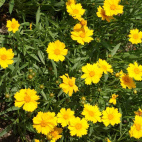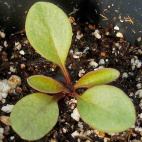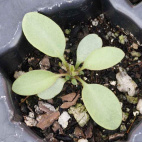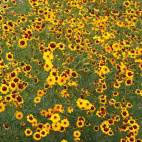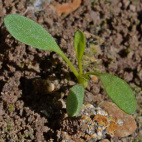Picta Tickseed Seeds
Coreopsis nuecensis
- HOW TO GROW
- FAST FACTS
HOW TO GROW
Sowing: Direct sow in late fall, planting the seed just below the surface of the soil; these seeds need light to germinate. For spring planting, mix the seed with moist sand and store it in the refrigerator for 30 days before direct sowing. Keep the soil evenly moist until germination, which should occur within 10-15 days. The treated seeds can also be started indoors 6-8 weeks before the last frost of spring; plant the seeds on the surface of a flat, keeping the moisture consistent and the temperature around 65 degrees F. Transplant seedlings.
Growing: This plant adapts to nearly any soil, including rocky or shallow areas or seaside conditions. Water the seedlings occasionally until they become established; mature plants prefer dry soil and tolerate drought, heat, and humidity well. If given too much moisture or rich soil, the plants tend to flop and may need support. If the blooming decreases midseason, cut the plant back by half for new growth and blooms. Regular deadheading also helps prolong the season of blooming. If allowed to self-seed it will produce volunteer plants, though it does not become weedy. This plant attracts butterflies and bees as well as resisting rabbits and deer.
Harvesting: For long lasting fresh flowers, cut the stems long and place them in water immediately.
Seed Saving: Several weeks after the flowers have faded, the seed heads will turn dry and dark brown. Since these seeds are a favorite food of songbirds and rodents, harvest them promptly. Cut the heads from the plant and spread them out to dry completely. Break them apart to remove the seeds, and separate the seeds from the chaff. Store the seeds in a cool, dry place.
FAST FACTS
Common Names: Crown Tickseed
Latin Name: Coreopsis nuecensis
Species Origin: US Native Wildflower
Type: Native Wildflowers
Life Cycle: Annual
USDA Zones: 2, 3, 4, 5, 6, 7, 8, 9, 10, 11, 12
US Regions: California, Mountain, Arid/Desert, Plains/Texas, Midwest, Northern, Northeast, Southeast
Seeds per Ounce: 9,200
Stratification: Cold/Wet for 4 Weeks
Germination Ease: Stratify 4 Weeks
Sunlight: Full Sun
Height: 24 Inches
Color: Yellow
Bloom Season: Blooms Early Spring, Blooms Late Spring
Uses: Attracts Pollinators, Attracts Butterflies, Cut Flowers, Deer Resistant
DESCRIPTION
HOW TO GROW
Sowing: Direct sow in late fall, planting the seed just below the surface of the soil; these seeds need light to germinate. For spring planting, mix the seed with moist sand and store it in the refrigerator for 30 days before direct sowing. Keep the soil evenly moist until germination, which should occur within 10-15 days. The treated seeds can also be started indoors 6-8 weeks before the last frost of spring; plant the seeds on the surface of a flat, keeping the moisture consistent and the temperature around 65 degrees F. Transplant seedlings.
Growing: This plant adapts to nearly any soil, including rocky or shallow areas or seaside conditions. Water the seedlings occasionally until they become established; mature plants prefer dry soil and tolerate drought, heat, and humidity well. If given too much moisture or rich soil, the plants tend to flop and may need support. If the blooming decreases midseason, cut the plant back by half for new growth and blooms. Regular deadheading also helps prolong the season of blooming. If allowed to self-seed it will produce volunteer plants, though it does not become weedy. This plant attracts butterflies and bees as well as resisting rabbits and deer.
Harvesting: For long lasting fresh flowers, cut the stems long and place them in water immediately.
Seed Saving: Several weeks after the flowers have faded, the seed heads will turn dry and dark brown. Since these seeds are a favorite food of songbirds and rodents, harvest them promptly. Cut the heads from the plant and spread them out to dry completely. Break them apart to remove the seeds, and separate the seeds from the chaff. Store the seeds in a cool, dry place.
FAST FACTS
Common Names: Crown Tickseed
Latin Name: Coreopsis nuecensis
Species Origin: US Native Wildflower
Type: Native Wildflowers
Life Cycle: Annual
USDA Zones: 2, 3, 4, 5, 6, 7, 8, 9, 10, 11, 12
US Regions: California, Mountain, Arid/Desert, Plains/Texas, Midwest, Northern, Northeast, Southeast
Seeds per Ounce: 9,200
Stratification: Cold/Wet for 4 Weeks
Germination Ease: Stratify 4 Weeks
Sunlight: Full Sun
Height: 24 Inches
Color: Yellow
Bloom Season: Blooms Early Spring, Blooms Late Spring
Uses: Attracts Pollinators, Attracts Butterflies, Cut Flowers, Deer Resistant
Also Consider These:
-
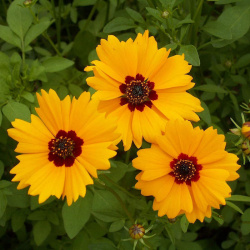 Golden Wave Tickseed Seeds
Coreopsis basalis
Native to the southern United States, this cheery, yellow wildflower will brighten any garden as an annual. This plant is also popular for butterfly gardens because it is showy, and it is a food source for pollinators.Quick View$2.98 Pkt - $9.35 / Oz
Golden Wave Tickseed Seeds
Coreopsis basalis
Native to the southern United States, this cheery, yellow wildflower will brighten any garden as an annual. This plant is also popular for butterfly gardens because it is showy, and it is a food source for pollinators.Quick View$2.98 Pkt - $9.35 / Oz -
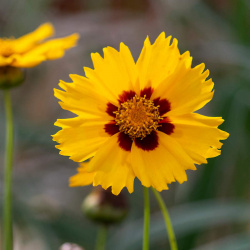 Large Flowered Tickseed Seeds
Coreopsis grandiflora
These vivid, yellow flowers almost glow in the sunlight, against their dark green foliage. They are easy to grow and make a fantastic choice for a prairie planting, a butterfly garden, or even as cut flowers.Quick View$2.98 Pkt - $9.54 / Oz
Large Flowered Tickseed Seeds
Coreopsis grandiflora
These vivid, yellow flowers almost glow in the sunlight, against their dark green foliage. They are easy to grow and make a fantastic choice for a prairie planting, a butterfly garden, or even as cut flowers.Quick View$2.98 Pkt - $9.54 / Oz -
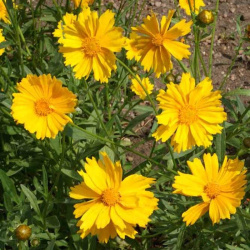 On Sale!
Dwarf Lance Leaved Coreopsis Seeds
Coreopsis lanceolata
These easy-to-grow wildflowers are a shorter member of the family that bloom late summer. A popular choice of beginning gardeners and master gardeners alike, who have limited space in their garden.Quick View$3.48 Pkt - $7.92 / Oz
On Sale!
Dwarf Lance Leaved Coreopsis Seeds
Coreopsis lanceolata
These easy-to-grow wildflowers are a shorter member of the family that bloom late summer. A popular choice of beginning gardeners and master gardeners alike, who have limited space in their garden.Quick View$3.48 Pkt - $7.92 / Oz -
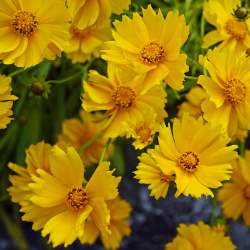 Sand Coreopsis Seeds
Coreopsis lanceolata
This golden wildflower will bring sunshine wherever it grows. A popular choice of beginning gardeners because it is so easy to grow, and produces a really satisfying flower in a short time.Quick View$2.98 Pkt - $7.52 / Oz
Sand Coreopsis Seeds
Coreopsis lanceolata
This golden wildflower will bring sunshine wherever it grows. A popular choice of beginning gardeners because it is so easy to grow, and produces a really satisfying flower in a short time.Quick View$2.98 Pkt - $7.52 / Oz -
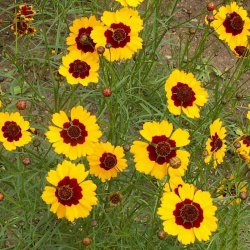 Dwarf Plains Coreopsis Seeds
Coreopsis tinctoria
This slender annual produces masses of yellow flowers with contrasting deep red centers. A popular choice of beginning gardeners because it is so easy to grow and produces a gratifying flower.Quick View$2.98 Pkt - $7.59 / Oz
Dwarf Plains Coreopsis Seeds
Coreopsis tinctoria
This slender annual produces masses of yellow flowers with contrasting deep red centers. A popular choice of beginning gardeners because it is so easy to grow and produces a gratifying flower.Quick View$2.98 Pkt - $7.59 / Oz -
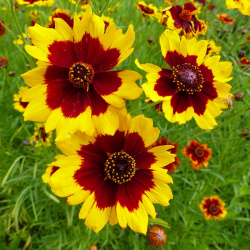 Plains Coreopsis Seeds
Coreopsis tinctoria
Profuse yellow blossoms with deep red centers are a delightful addition to a meadow or garden. This annual is very easy to grow and makes an excellent choice for beginning gardeners.Quick View$2.98 Pkt - $7.41 / Oz
Plains Coreopsis Seeds
Coreopsis tinctoria
Profuse yellow blossoms with deep red centers are a delightful addition to a meadow or garden. This annual is very easy to grow and makes an excellent choice for beginning gardeners.Quick View$2.98 Pkt - $7.41 / Oz














